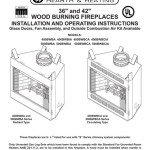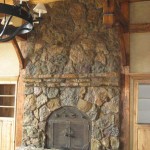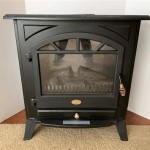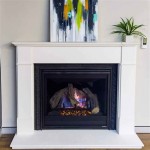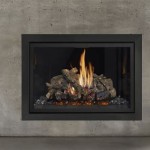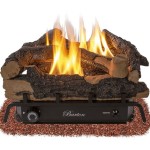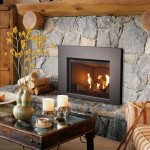How To Build A Rustic Fireplace Mantel And Surround
A fireplace serves as a focal point in many homes, providing warmth and ambiance. Enhancing its aesthetic appeal through the construction of a rustic fireplace mantel and surround can transform the entire room. This article details the process of building a rustic fireplace mantel and surround, outlining the necessary steps, materials, and considerations for successful completion.
Before commencing the project, it is crucial to assess the existing fireplace structure and surrounding area. Accurate measurements of the firebox opening, chimney breast width, and ceiling height are essential for proper planning and material acquisition. Local building codes and regulations should also be reviewed to ensure compliance with safety standards and construction guidelines.
Safety considerations are paramount throughout the entire construction process. Wearing appropriate personal protective equipment, such as safety glasses, gloves, and a dust mask, is necessary to mitigate potential hazards. Working with power tools requires caution and adherence to manufacturer instructions. Proper ventilation is vital when working with adhesives, stains, or sealants.
Planning and Design
The first step involves determining the desired style and dimensions of the rustic mantel and surround. Rustic designs often incorporate natural materials, such as reclaimed wood, stone, or brick, to create a warm and inviting atmosphere. The mantel's dimensions should be proportionate to the fireplace and the size of the room, typically extending several inches beyond the firebox opening on each side.
A detailed design plan, including sketches or CAD drawings, is beneficial for visualizing the final product and guiding the construction process. The plan should specify the dimensions of each component, the type of materials to be used, and the method of assembly. Consideration should be given to the mantel's weight-bearing capacity if it will be used to display decorative items.
Material selection plays a significant role in achieving the desired rustic aesthetic. Reclaimed wood, with its inherent character and imperfections, is a popular choice for mantels. Options include barn beams, weathered planks, and salvaged lumber. For the surround, natural stone veneer, brick, or textured concrete can create a complementary rustic look. These materials can be sourced from local suppliers, salvage yards, or online retailers.
The design should also incorporate considerations for heat resistance, especially near the firebox opening. Non-combustible materials, such as stone or brick, should be used for areas directly exposed to heat. A sufficient distance between the mantel and the firebox is necessary to prevent the wood from overheating and potentially igniting. Fire-resistant sealants and coatings can provide additional protection.
Gathering Materials and Tools
Once the design is finalized, the necessary materials and tools should be gathered. The specific materials will vary depending on the chosen design and construction techniques. However, a basic list typically includes:
- Reclaimed wood or lumber for the mantel
- Stone veneer, brick, or concrete for the surround
- Wood screws, nails, and construction adhesive
- Mortar or thin-set mortar for stone or brick installation
- Wood stain, sealant, or paint
- Safety glasses, gloves, and a dust mask
Essential tools include:
- Measuring tape and level
- Circular saw or miter saw
- Drill and driver
- Hammer
- Sanding block or orbital sander
- Mortar trowel (if using stone or brick)
- Grout sponge (if using stone or brick)
Ensuring all materials are readily available before starting the project will help streamline the construction process and minimize delays.
Construction Process
The construction process begins with preparing the existing fireplace area. This may involve removing any existing mantel or surround components, cleaning the surface, and ensuring it is structurally sound. If necessary, the wall behind the fireplace may need to be reinforced to support the weight of the new surround.
For the mantel, the reclaimed wood or lumber should be cut to the desired dimensions according to the design plan. The edges can be left raw for a more rustic look or sanded smooth for a refined finish. Any imperfections, such as knots or nail holes, can be left intact to enhance the rustic character of the wood.
The mantel can be constructed as a solid piece or assembled from multiple pieces. If constructing a hollow mantel, a framework of 2x4 lumber can provide structural support. The outer shell of the mantel can then be attached to the framework using wood screws and construction adhesive.
The surround is typically constructed by attaching the chosen material (stone veneer, brick, or concrete) to the wall around the firebox opening. Mortar or thin-set mortar is used to adhere the material to the wall. Ensuring the material is level and evenly spaced is crucial for a professional-looking finish. Grout can be applied between the individual pieces to fill the gaps and create a cohesive surface.
Once the mortar or thin-set mortar has cured, the surround can be cleaned with a grout sponge and water. Any excess mortar should be removed to reveal the natural texture and color of the material.
The mantel can be attached to the wall using various methods, depending on its weight and design. Heavy mantels may require the use of steel brackets bolted to the wall studs. Lighter mantels can be attached using construction adhesive and wood screws. Ensuring the mantel is securely fastened is essential for safety.
After the mantel and surround are installed, the final step involves applying a finish to the wood. This may include staining the wood to enhance its color and grain, sealing it to protect it from moisture, or painting it to create a desired aesthetic. The chosen finish should be appropriate for the type of wood and the desired level of durability.
For stone or brick surrounds, a sealant can be applied to protect the material from staining and moisture. The sealant should be applied according to the manufacturer's instructions, ensuring even coverage and proper ventilation.
Safety Considerations and Code Compliance
Building codes pertaining to fireplace construction vary by location. These codes typically address issues such as clearance to combustible materials, fire-resistant construction, and ventilation requirements. It is essential to consult local building codes and obtain any necessary permits before commencing the project.
Maintaining a safe distance between the mantel and the firebox opening is crucial for preventing the wood from overheating and potentially igniting. A minimum clearance of 12 inches is generally recommended, but this may vary depending on the type of fireplace and local building codes. Using non-combustible materials, such as stone or brick, for areas directly exposed to heat can further enhance safety.
Proper ventilation is essential for preventing the buildup of carbon monoxide and other harmful gases. Ensuring the fireplace has a properly functioning chimney and venting system is critical for safe operation. Regular inspections and maintenance of the fireplace and chimney are necessary to ensure they are in good working condition.
When using adhesives, stains, or sealants, it is vital to follow the manufacturer's instructions and provide adequate ventilation. These materials can release harmful fumes that can be hazardous to inhale. Wearing a respirator mask can provide additional protection.
Maintaining the Rustic Fireplace
Maintaining the rustic fireplace mantel and surround is crucial for preserving its aesthetic appeal and ensuring its longevity. Regular cleaning and inspection can prevent damage and prolong the life of the structure.
The mantel should be dusted regularly to prevent the buildup of dirt and grime. A damp cloth can be used to wipe down the surface, but harsh chemicals should be avoided. For wood mantels, applying a furniture polish can help protect the finish and enhance its luster.
Stone or brick surrounds can be cleaned with a mild soap and water solution. A soft-bristled brush can be used to scrub away any stubborn stains or dirt. Avoid using abrasive cleaners that can damage the surface of the material.
The fireplace and chimney should be inspected annually for any signs of damage or deterioration. Cracks in the mortar, loose bricks, or a buildup of creosote in the chimney should be addressed promptly to prevent further damage and ensure safe operation.
By following these guidelines, individuals can successfully build a rustic fireplace mantel and surround that enhances the beauty and functionality of their homes, creating a warm and inviting space for years to come.

Diy Rustic Fireplace Mantel The Cure For A Boring
:max_bytes(150000):strip_icc()/sandandsisal-bdc76ad938a44d28ae9e23ef6c9fa331.jpg?strip=all)
17 Diy Fireplace Mantel Plans

Diy Fireplace Mantel And Surround Jenna Kate At Home

How To Build And Hang A Mantel On Stone Fireplace Shanty 2 Chic

How To Create A Diy Reclaimed Wood Fireplace Surround For Less Than 100 Grand Rapids Interior Design Fuchsia
:max_bytes(150000):strip_icc()/ablossominglife-4151b41015a64193a437e981c3aad037.jpg?strip=all)
17 Diy Fireplace Mantel Plans

10 Rustic Fireplace Mantel Ideas Blog Red Door

Diy Wood Beam Mantel

Diy Wood Beam Mantel

Diy Rustic Fireplace Mantel The Cure For A Boring Story Lovely Etc

